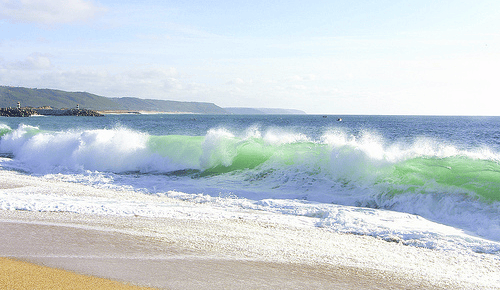
Human activities (i.e. greenhouse gases and aerosols) have an influence on sea surface temperatures in the Atlantic Ocean and as a consequence on a number of important climate phenomena.
Those are the results of a study recently published on Journal of Climate (among the authors, also the CMCC researchers A. Bellucci and S. Gualdi of CSP – Climate Simulation and Prediction Division) inspecting the origins of multidecadal variability in the North Atlantic sea surface temperature, with a special focus on the 1940–75 ‘‘warm-to-cold’’ transition.
What’s the Atlantic Multidecadal Variability and why it is important for the global climate? The Atlantic Multidecadal Variability (AMV) is particularly important while affecting several components of the climate, even in Europe and in the Mediterranean region: drier condition over the Mediterranean basin and wetter condition over Northern Europe, rainfall variability over Sahel, Arctic sea-ice and Greenland ice sheet, or the increased Atlantic hurricanes frequency are among the hydro-climatic phenomena influenced by this signal and its phases.
The issue is at the center of an international debate, recently summarized and explored by Nature Journal.
As discussed in the article, there two main alternative schools of thought; in the past, the scientific community conventionally thought that this signal was mainly caused by internal processes, in particular by naturally occurring changes in atmospheric and ocean circulation. In the recent years, some researchers have suggested a possible implication of external drivers (including volcanos, solar variability, and anthropogenic aerosols emission). Both internal and external drivers are likely important for the AMV and they are not mutually exclusive.
Bellucci provided new perspectives on this issue while presenting the results of his study at the CMCC seminar entitled “The Role of Forcings in the Twentieth-Century North Atlantic Multidecadal Variability: The 1940–75 North Atlantic Cooling Case Study”.
Watch the video:
Researchers performed a multimodel analysis and examined the ability of uninitialized, historical integrations from the phase 5 of the Coupled Model Intercomparison Project (CMIP5) archive to retrospectively reproduce this specific episode of twentieth-century climatic history, under a different external forcing conditions (natural: volcanoes, solar activity, and/or anthropogenic: GHG, anthrop. aerosols, land use changes, ozone).
Human activities have an influence on sea surface temperatures in the Atlantic Ocean and as a consequence on a number of important climate phenomena: the picture emerging from Bellucci’s analysis suggests in fact that the 20th century Atlantic Multidecadal Variability cycle does actually result from a combination of several factors, with the anthropogenic drivers, such as anthropogenic aerosols and greenhouse gases, playing a relevant role during the 1940-1975 cooling, and natural forcings (solar and volcanoes, essentially) prevailing in the first half of the 20th century.
Read the integral version of the paper:
Bellucci A., Mariotti A., Gualdi S.
The role of forcings in the 20th century North Atlantic multi-decadal variability: the 1940-1975 North Atlantic cooling case study
2017, Journal of Climate, DOI: 10.1175/JCLI-D-16-0301.1
For further information, read also the article “Climate: new evidence on climate variability in the Atlantic Ocean”.


